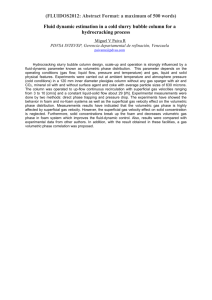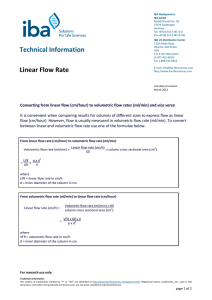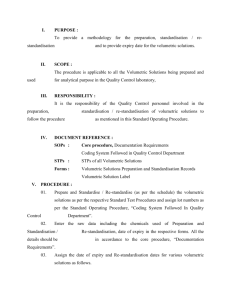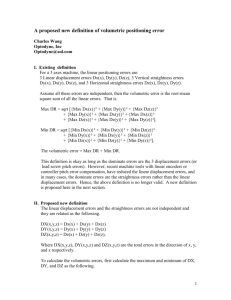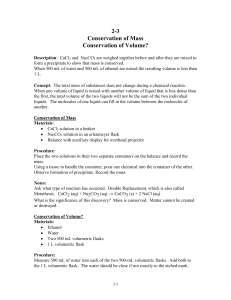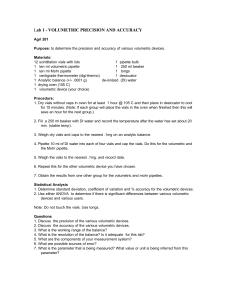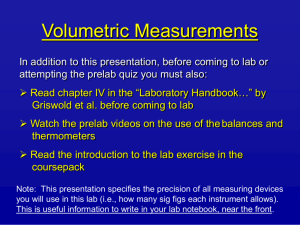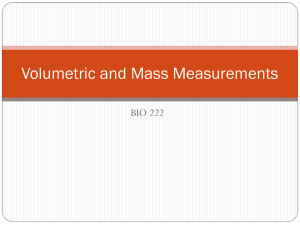Chapter 3 - Volumetric Analysis
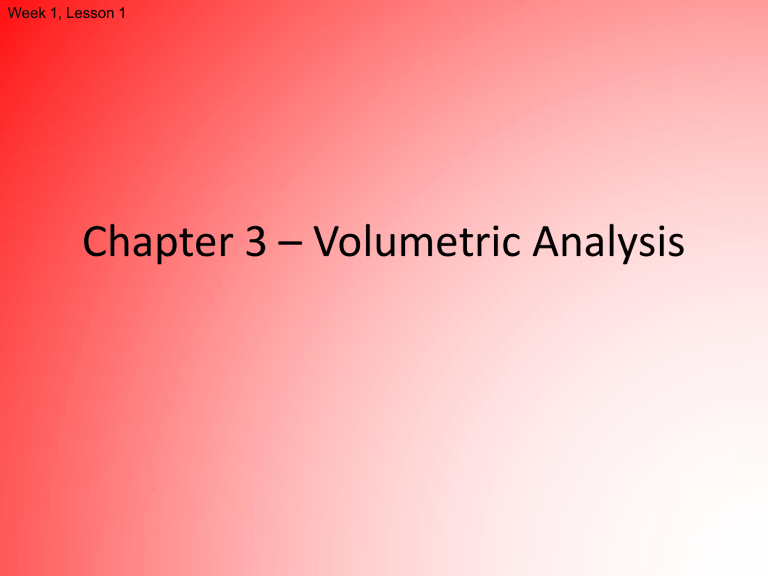
Week 1, Lesson 1
Chapter 3 – Volumetric Analysis
Volumetric Analysis
• Is a method that involved chemical reactions between substances in aqueous solutions.
• The amount, in mol, of the substance being analysed is determined by measuring the volume of the test solution required to react completely with a volume of solution with a known concentration.
• This method is usually faster and more convenient than gravimetric analysis.
Concentration
• Concentration is the measure of the amount of solute in a specified volume of solvent.
• Concentration is usually expressed as molar concentration, or molarity.
• C = n/v
Standard Solutions
• A solution with an accurately known concentration is called a standard solution.
• Preparing a standard solution is not just dissolving a measured mass of a substance in water to give a known volume of solution.
• This is because most chemicals are impure as they decompose or react with chemicals in the atmosphere.
Primary Standards
• Substances that are so pure that the amount of substance, in mole, can be calculated accurately from their mass are called primary standards.
• A primary standard should:
– Be readily obtainable in pure form
– Have a known formula
– Be easy to store without deteriorating or reacting with the atmosphere
– Have a high molar mass to minimise the effects of errors in weighing
– Be inexpensive
• Examples of primary standard are:
– Bases: anhydrous sodium carbonate, sodium borate
– Acids: hydrated oxalic acid and potassium hydrogen phthalate
Making a Standard Solution
• A standard solution can be prepared from a primary standard by dissolving an accurately known mass to make up an accurately known volume of solution.
• Precise volumes of solutions are obtained using volumetric flasks.
1. Place weighed sample in volumetric flask.
2. Half fill with water, shake to dissolve the sample.
3. Add water to the calibration line, shake again.
Accuracy
• The accuracy with which the volumes of the aliquot and titre are measured depends on the calibration of the pieces of equipment used.
• Analytical pipettes deliver fixed, accurate volumes of liquid.
Errors & Uncertainties
• There are always errors associated with measurements made during experimental work.
• Typical uncertainties associated with volumetric analysis are:
– 20.0mL pipette ± 0.05mL
– Burette ± 0.02mL for each reading
– 250.0mL volumetric flask ± 0.03mL
Errors & Uncertainties cont…
• Burettes are usually calibrated at 0.1mL intervals.
• The meniscus is usually read to the bottom curve and the volume can be estimated to the nearest 0.02mL
• If the meniscus lies exactly on a line, it should be recorded to the second decimal place to indicate this.
• It is usual to keep repeating titrations until three concordant titres are obtained, that means three titres differing by a maximum of 0.1mL from highest to lowest.
• This is because the volume of one single drop from a burette is 0.05mL, so taking the average of three results assumes that they will be no more than one drop over or under the accurate titre.




